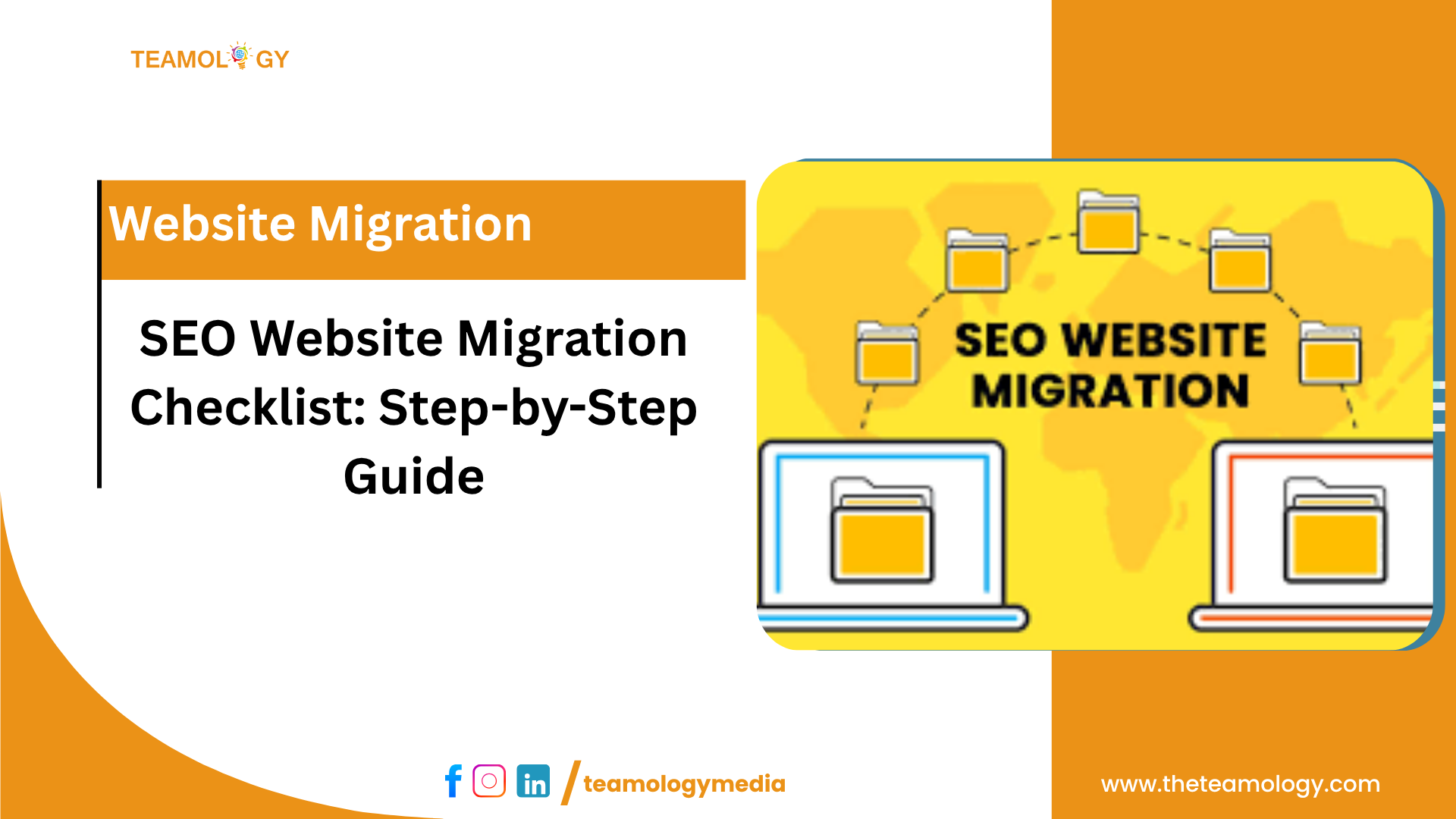Introduction
Migrating a website can feel like moving into a new home. You’re eager for a new beginning, but you’ll be in a hurry if you neglect to bring the necessities. Similarly, you risk losing rankings, traffic, and years of arduously earned visibility if you don’t have a solid SEO website migration plan.
To ensure you know exactly how to migrate a website without losing SEO, this SEO migration guide will walk you through a detailed step-by-step website migration process, highlight site migration SEO best practices, and provide an actionable SEO checklist for website migration.
What Is SEO Website Migration?
An SEO website migration refers to significant changes to a site’s structure, platform, domain, or content that have the potential to affect search engine visibility significantly. A few such examples include moving to a new domain, switching from HTTP to HTTPS, redesigning site architecture, migrating to a new CMS (like WordPress or Shopify), and merging or consolidating websites. When done correctly, it will improve performance and user experience. However, if done poorly, it can tank your rankings overnight.
Why Do You Need an SEO Website Migration Checklist?
Search engines are sensitive in nature and hence, react quickly to sudden changes. Google may struggle to crawl and index your site if URLs, metadata, or site structure shift suddenly. A well-structured website migration checklist is therefore essential. It guarantees a seamless transition, keeps authority, and avoids mistakes.
Consider this a moving-day handbook to make sure you don’t forget any crucial “ranking furniture.”
Step-by-Step Website Migration
The following are the steps on how to migrate a website without losing SEO.
Step 1: Pre-Migration Planning
Firstly, map out everything before you even touch the website. Make sure to always keep a copy of the existing site in case of emergencies. Additionally, record the rankings, organic traffic, and indexation status. This baseline will help measure the impact after migration.
Step 2: Set Up a Test Environment
It is essential to test all the changes on a staging site before your website goes live.
Step 3: Map and Redirect URLs
Redirects are the backbone of a successful migration. You must match old URLs with their new counterparts to create a URL mapping document. Use 301 redirects, which will then redirect these permanent signals to Google so that link equity passes to the new page.
Step 4: Optimise On-Page Elements
Due to the complexity of the process, it is often easy to overlook content and metadata during migration. So, it is necessary to ensure title tags, meta descriptions, headers, and alt texts are carried over.
Step 5: Technical SEO Review
Establish a full technical SEO audit before launch. Ensure that robots.txt and XML sitemaps are updated. In addition, test mobile-friendliness and Core Web Vitals. Also, fix broken links and duplicate content.
Step 6: Launch With Monitoring Tools in Place
When it’s time to launch, update the sitemap and submit it using Google Search Console. Keep an eye on coverage reports, indexation problems, and crawl faults. For the first month, compare traffic patterns and rankings every day.
Step 7: Post-Migration Tracking
The work does not end after the launch.
Even after launch, the job isn’t over. Keep tabs on keyword positions for a minimum of 90 days. Track organic traffic against pre-migration standards. Watch backlink profiles to ensure they still point correctly.

SEO Checklist for Website Migration
This is a simplified version of your website migration SEO checklist:
✅ Crawl the old site and save data.
✅ Benchmark traffic, rankings, and indexation.
✅ Prepare a URL mapping spreadsheet.
✅ Plan 301 redirects (no chains).
✅ Transfer on-page SEO elements.
✅ Optimise XML sitemap and robots.txt.
✅ Test everything on a staging site.
✅ Submit updated sitemap to Google.
✅ Monitor crawl errors and rankings post-launch.
The likelihood of traffic loss is significantly decreased by using this SEO migration guide.
Site Migration SEO Best Practices
Keep these golden rules in mind to better ensure your rankings:
- Communicate with stakeholders – Everyone (developers, SEO team, content writers) should know the migration plan.
- Time it wisely – Avoid peak traffic seasons.
- Update backlinks – Reach out to high-value referring domains to update old URLs.
- Keep the old domain active – Don’t shut down the old site immediately; let redirects work for months.
- Monitor server logs – To ensure search engines are crawling new URLs properly.
These site migration SEO best practices help you stay on course throughout the changeover by serving as barriers.
How to Migrate a Website Without Losing SEO
The answer to this question lies in preparation, execution, and follow-up. If you make a thorough plan using a website migration checklist, implement redirects correctly, keep your metadata and content intact and monitor the performance closely, then you’ll not only protect your SEO equity but may even improve rankings thanks to a cleaner, faster, and more optimised website.
Conclusion
It takes planning, not luck, to migrate an SEO website successfully. Following this comprehensive website migration strategy will guarantee that your hard-earned rankings are maintained, regardless of whether you’re revamping your website, switching platforms, or shifting domains.
Think of it this way: migration isn’t just about avoiding damage—it’s an opportunity to improve. You may make the transition with confidence and emerge stronger if you have the appropriate SEO checklist for website migration, meticulous planning, and regular monitoring.
“So, the next time you plan to migrate your website without losing SEO, trust that preparation lays the foundation, execution drives success, and continuous monitoring ensures lasting results — just like we do at Teamology.


